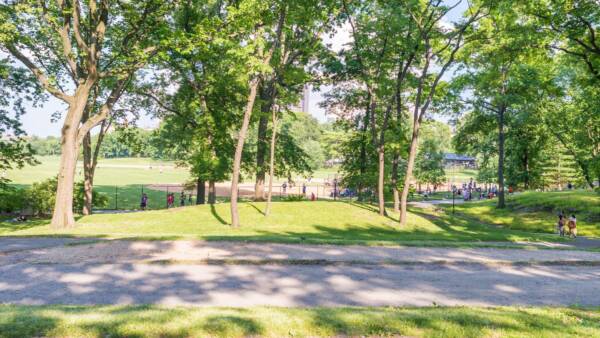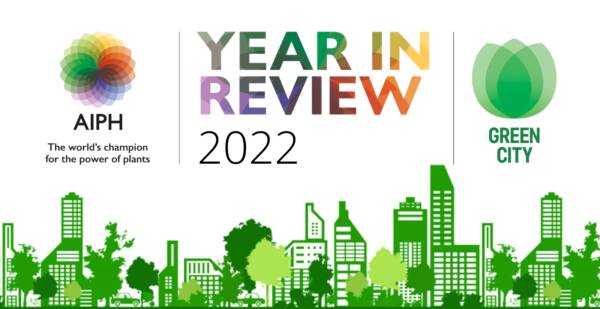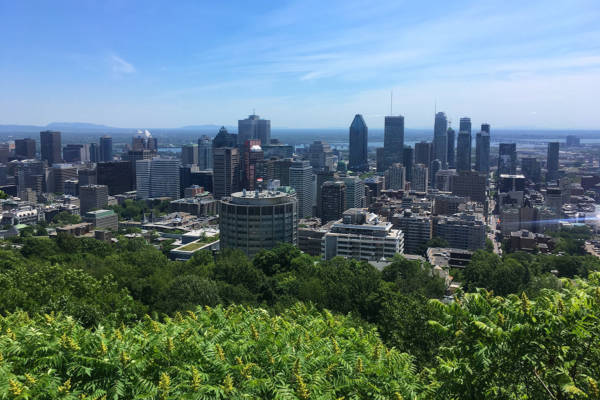Poor air quality is a global issue, but there are particular concerns around children breathing-in pollutants. Aerial pollutants aggravate the lungs and can induce asthma. Small particles (particulate matter – PM) are absorbed into the bloodstream, subsequently affecting heart and brain health as well as inducing certain cancers. Thus, minimising children’s exposure to poor quality air is vital for both short- and long-term health. With this in mind the University of Sheffield worked with a primary school in Sheffield (Hunters Bar Primary) to investigate if air quality around the school’s grounds could be improved by introducing a ‘green’ (i.e. vegetated) barrier.
This green barrier comprising approximately 1m depth of vegetation was introduced to the perimeter of the school playground. Plant taxa were chosen to maximise the absorbance or dispersion of aerial pollutants based on the known literature. These including Hedera helix, fine-leaved conifers such as Juniperus scopulorum, Thuja occidentalis and Chamaecyparis lawsoniana, as well as the bamboo Phyllostachys nigra to help filter air coming in from an adjacent trunk road. Flowering plants such as Lavandula officinalis were introduced at the base of the barrier to provide flower colour and scent. Two aspects of air quality were measured before and after the introduction of the barrier, namely nitrogen dioxide (NO2) and PM2.5. The researchers were also interested to see how the barrier was viewed by pupils, staff and parents and whether any additional benefits or drawbacks accrued from its introduction.
The results showed the barrier reduced NO2 levels in the playground. There were also small reductions in PM2.5 concentrations, but the results on particulate matter were dependent on weather conditions – particularly the direction the wind was blowing from and how the vegetation interacted with the prevailing wind. Even by the end of the experiment the barrier was still relatively thin, and thicker, older green barriers are more likely to absorb greater levels of pollutants. Despite this, the research data suggests that landscape architects need to carefully design such barriers to ensure they block and disperse polluted air, not trap it within a playground area. Thus, knowledge of local climatic factors and specifically identifying the main point or diffuse source of particulate pollutants is important to ensure that green barriers function optimally.
Qualitative interviews/questionnaires revealed some intriguing aspects related to the green barrier intervention. Recurring themes include perceived improvements in safety, enhanced place quality and attractiveness, and the development of a more restorative environment for mental wellbeing. Participants described the green barrier as making a ‘massive improvement’ to the visual appearance of the playground. An improved sense of wellbeing was frequently mentioned in interviews (13/17) and questionnaires (56/110). The opportunity for children to interact with the plants was linked to wellbeing too. For example, children with special needs watered the plants, and teachers identified this activity as being particularly calming for these children.
Another common theme was the learning opportunities that the green barrier afforded. The playground is used as an outdoor learning space, and the vegetation provided cross-curricular resources in a large range of modules including biology, maths, arts and directly in mental health awareness. Teachers also mentioned that the green barrier rendered space for teaching ‘respect and value’ for nature. Parents believed the new environment provided easy access to greenery and improved the pupils’ connection to nature. Besides identifying a new habitat and connectivity for wildlife, 70% of the interviewees reflected on their own environmental learning and attitudes to sustainable living. This developed into direct actions (pro-environmental behaviours), such as more home gardening, turning car engines off outside the school and adopting more active (‘low carbon’) travel. Finally, some interviewees considered that involving local businesses and the school community promoted social cohesion and the green barrier had become a positive ‘point of focus’ for the local community.
Overall the study concluded that moderate improvements in air quality were achieved, but the barrier also elicited a wide range of additional benefits. Based on this research a generic guide to green barrier implementation is being written with the aim to distribute to other schools.
PhD student: María del Carmen Redondo-Bermúdez
Supervisory team: Anna Jorgensen, Ross. Cameron, Maria Val Martin, Beverley Inkson, Juan Kanai, University of Sheffield.



















